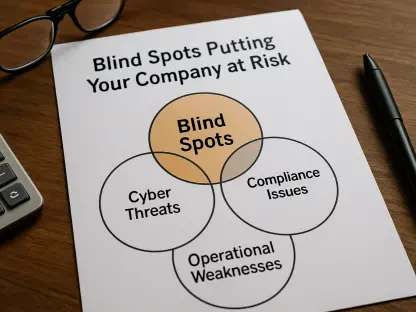The emergence of DeepSeek, an AI model developed in the People’s Republic of China (PRC), has raised significant concerns on the global stage. This article explores the competitive, security, and policy implications of DeepSeek, examining whether it poses a national security threat to global AI development.
The Rise of DeepSeek
Bridging the AI Gap
DeepSeek’s launch in early 2023 marked a pivotal moment, showcasing that the PRC had nearly closed the gap with leading U.S. AI companies. The model’s ability to deliver cost-effective and energy-efficient AI solutions without high-end chips disrupted the perceived competitive edge of U.S. firms. This breakthrough in AI technology not only highlighted the PRC’s growing capabilities but also challenged the global dominance historically maintained by American companies such as Google and OpenAI.
DeepSeek’s development did not rely on high-end chips, which are often seen as a cornerstone for advanced AI systems. Instead, PRC researchers refined algorithms and hardware efficiencies, enabling the model to operate with fewer resources while maintaining high performance. This achievement challenged the notion that top-tier hardware was indispensable for leading AI innovation. Consequently, DeepSeek posed a formidable challenge to those businesses that had traditionally held the edge in AI technology, causing a ripple effect across global markets and industries dependent on artificial intelligence.
Global Reactions
The rapid ascent of DeepSeek unsettled global markets and sparked security concerns. Countries like Italy, Taiwan, Australia, and South Korea responded by blocking or banning DeepSeek on government devices due to apprehensions about data management practices. These nations were particularly wary of potential data breaches and unauthorized access, fearing that sensitive information could be exploited or redirected to unauthorized entities in the PRC.
The decision to block or ban DeepSeek was not made lightly; it stemmed from substantial concerns about the model’s handling of user data and the implications for national security. This prompted significant policy discussions and highlighted the need for proactive measures to protect digital sovereignty. In the United States, agencies such as NASA and the U.S. Navy took similar precautions by advising employees against using DeepSeek-equipped devices. The concerns resonated with various federal agencies, further emphasizing the global unease regarding PRC-developed AI applications.
U.S. Policy Response
Trump Administration’s AI Strategy
The arrival of DeepSeek coincided with President Donald Trump’s efforts to redefine U.S. AI leadership. By revoking the Biden administration’s executive order on AI regulation and demanding a new AI action plan, Trump aimed to bolster private sector leadership in AI. This marked a pivotal shift in strategy that strove to place the U.S. at the helm of AI innovation once again by emphasizing private enterprise and reducing governmental red tape.
President Trump’s call for a new AI action plan within 180 days was intended to catalyze rapid developments and strategic investments within the field. By engaging the private sector more actively, the administration hoped to leverage its agility and innovation prowess to outpace competitors like the PRC. However, this aggressive push for advancement also needed to address the growing security concerns raised by models such as DeepSeek, particularly amid increasing fears of AI’s potential misuse and vulnerability.
Balancing Innovation and Security
As the new administration formulates its AI policy, the security risks posed by DeepSeek could influence the balance between fostering innovation and ensuring national security. The lack of a coherent federal AI policy creates a fragmented regulatory landscape that hampers progress. This fragmentation often leads to inconsistencies across different states and a lack of standardized safety measures, which could be detrimental in the face of growing international competition and security threats.
To reconcile innovation with security concerns, the administration needs to establish a balanced framework that encourages technological progress while implementing robust protection mechanisms. The challenge lies in developing policies that offer clear guidelines without stifling innovation or overburdening AI developers with excessive regulations. Striking this balance is crucial for maintaining the U.S.’s competitive edge while safeguarding against vulnerabilities that models like DeepSeek could exploit.
Security Vulnerabilities
Open-Source Risks
DeepSeek’s open-source nature allows users to download and modify the application, posing significant security risks. While open-source models can offer numerous benefits by fostering collaboration and rapid advancements, they also have the potential to be exploited for malicious purposes. A Cisco study highlighted that DeepSeek failed to block harmful prompts, making it highly susceptible to exploitation by cybercriminals. The study’s findings underscored the model’s vulnerability to manipulations that could lead to data breaches, cyber attacks, and the spread of misinformation.
The inherent flexibility of open-source AI models means users can alter their functionalities to suit varied purposes. However, the ability to modify security protocols raises the risk of the model being weaponized. Without stringent checks and balances, DeepSeek’s open architecture could be misused to develop sophisticated cyber tools capable of evading existing security mechanisms. Given these risks, considerable concerns linger about the potential for such models to be leveraged in cyber-espionage activities and other illicit undertakings.
Comparative Security Measures
In contrast, Western companies like OpenAI and Google implement stringent oversight and real-time monitoring to mitigate risks. These companies align their AI models with human values and collaborate with AI safety organizations to continually refine safety protocols. OpenAI, for instance, integrates robust security measures within its GPT-4 model, blocking a significant percentage of harmful prompts. Likewise, Google’s Gemini project incorporates comprehensive safeguards to detect and mitigate potential threats in real-time.
The proactive measures taken by these companies underscore their commitment to ethical AI development. By investing substantial resources in security and compliance, they strive to ensure their models adhere to an ethical framework that prioritizes user safety. The collaboration with AI safety organizations like the U.S. AI Safety Institute provides further oversight, ensuring that the models evolve with a continued focus on mitigating risks. Such measures stand in stark contrast to the perceived vulnerabilities of open-source models like DeepSeek, which lack the same level of integrated oversight and security.
PRC’s Cyber Espionage Strategy
Data Management Concerns
DeepSeek’s Terms of Service and Privacy Policy indicate that user data is stored in the PRC and governed by PRC law, which mandates cooperation with PRC intelligence agencies. This legal framework raises significant privacy and security concerns. The requirement for companies to share data with intelligence agencies means that user information could potentially be accessed and exploited for state surveillance or other unauthorized purposes, leaving both individual users and organizations vulnerable to privacy breaches.
PRC’s data management policies have often been criticized for their lack of transparency and accountability. The centralized control over data facilitates the government’s efforts to monitor and collect information on a large scale. The prospect of sensitive data being stored and accessed under such jurisdiction poses profound risks to international users, particularly those from nations with strained relations with the PRC. These concerns prompt a pressing need for robust data protection measures to ensure privacy and security despite legal requirements imposed within the PRC.
Technical Vulnerabilities
SecurityScorecard identified multiple vulnerabilities within DeepSeek, including weak encryption methods and potential SQL injection flaws. These vulnerabilities, coupled with undisclosed data transmissions to Chinese state-linked entities, exacerbate the security risks. Weak encryption can render user data susceptible to breaches, while SQL injection flaws can enable unauthorized access to databases, compromising the integrity and confidentiality of stored information. These issues highlight significant lapses in the model’s design and implementation, raising red flags for cybersecurity professionals.
The technical vulnerabilities present in DeepSeek extend beyond fundamental security lapses. The undisclosed data transmissions to Chinese state-linked entities suggest a deliberate attempt to siphon data under the guise of legitimate operations. Such practices undermine trust in AI solutions and call for heightened scrutiny and regulation. To mitigate these risks, it is crucial for international developers and policymakers to implement stringent security protocols and enforce transparency in AI model operations.
Policy Recommendations
Government Role in Cybersecurity
To address the security threats posed by DeepSeek, the article suggests a narrow government role in assessing the cybersecurity implications of AI models. This approach ensures a common understanding of models that could amplify malicious cyber activities. A focused government involvement would entail identifying potential threats and developing frameworks to mitigate them without stifling innovation. This targeted strategy can help streamline regulatory processes while ensuring that AI developments align with national security protocols.
The government’s role should be to facilitate coordination among various stakeholders, including private sector entities, cybersecurity experts, and international partners. By establishing common security standards and promoting best practices, the government can create a cohesive strategy to counter emerging threats. This collaborative approach ensures that AI innovation thrives while upholding stringent security measures, fostering a robust and secure AI ecosystem.
Recognizing DeepSeek as a Threat
The article recommends that President Trump formally recognize DeepSeek as a national security threat and ban it under existing laws. This action would set a precedent for addressing similar threats and reinforce the importance of robust security measures in AI development. By categorizing DeepSeek as a national security concern, the administration could invoke measures to curtail its use and limit potential exploitation within U.S. jurisdictions. Additionally, this formal recognition would signal the seriousness with which the government views cybersecurity threats, potentially prompting other nations to take similar actions.
Such recognition and consequent actions could serve as a deterrent, dissuading companies from allowing vulnerabilities in their AI models. It would emphasize the need for stringent security compliance and accountability in AI development, encouraging developers to prioritize safety and transparency. This move would also underscore the importance of proactive measures in safeguarding national security interests in the face of emerging technological challenges.
International Implications
Allies’ Dilemma
Internationally, DeepSeek presents a dilemma similar to the Huawei situation. While many U.S. allies acknowledge the app’s risks to privacy, security, and digital sovereignty, they hesitate to act due to potential repercussions from Beijing. The geopolitical implications of banning or restricting a PRC-developed AI model are significant, especially in the context of existing trade relations and diplomatic intricacies. Hesitation to act decisively stems from the fear of economic retaliation or diplomatic strains that could affect broader bilateral engagements.
This dilemma underscores the complexity of international relations when addressing emerging technologies. Allies must weigh the economic and political consequences of their actions against the need to safeguard national security. The need for a coordinated response is essential to mitigate risks without isolating individual nations, fostering a unified stance on responsible AI development.
Promoting Responsible AI Development
DeepSeek’s advanced capabilities have positioned it as a formidable player in the international tech arena, thus heightening competitive tensions. The AI model’s sophistication suggests that it could potentially outpace AI developments in other nations, raising questions about the global tech landscape’s balance of power. Furthermore, the AI’s origin in the PRC sparks considerable security worries, especially among countries wary of their technological sovereignty being undermined.
From a policy perspective, the rise of DeepSeek compels global governments to reconsider their regulatory frameworks. Ensuring that AI advancements do not compromise national security has become crucial. Policymakers are faced with the challenge of fostering AI innovation while simultaneously guarding against the technology being exploited for geopolitical leverage.
In summary, DeepSeek’s entry into the AI field is a pivotal moment, prompting a reevaluation of international tech strategies amid the dual pursuits of innovation and security. Therefore, the dialogue surrounding DeepSeek is not just about technological progress but also about crafting a balanced, secure approach to AI’s future.









